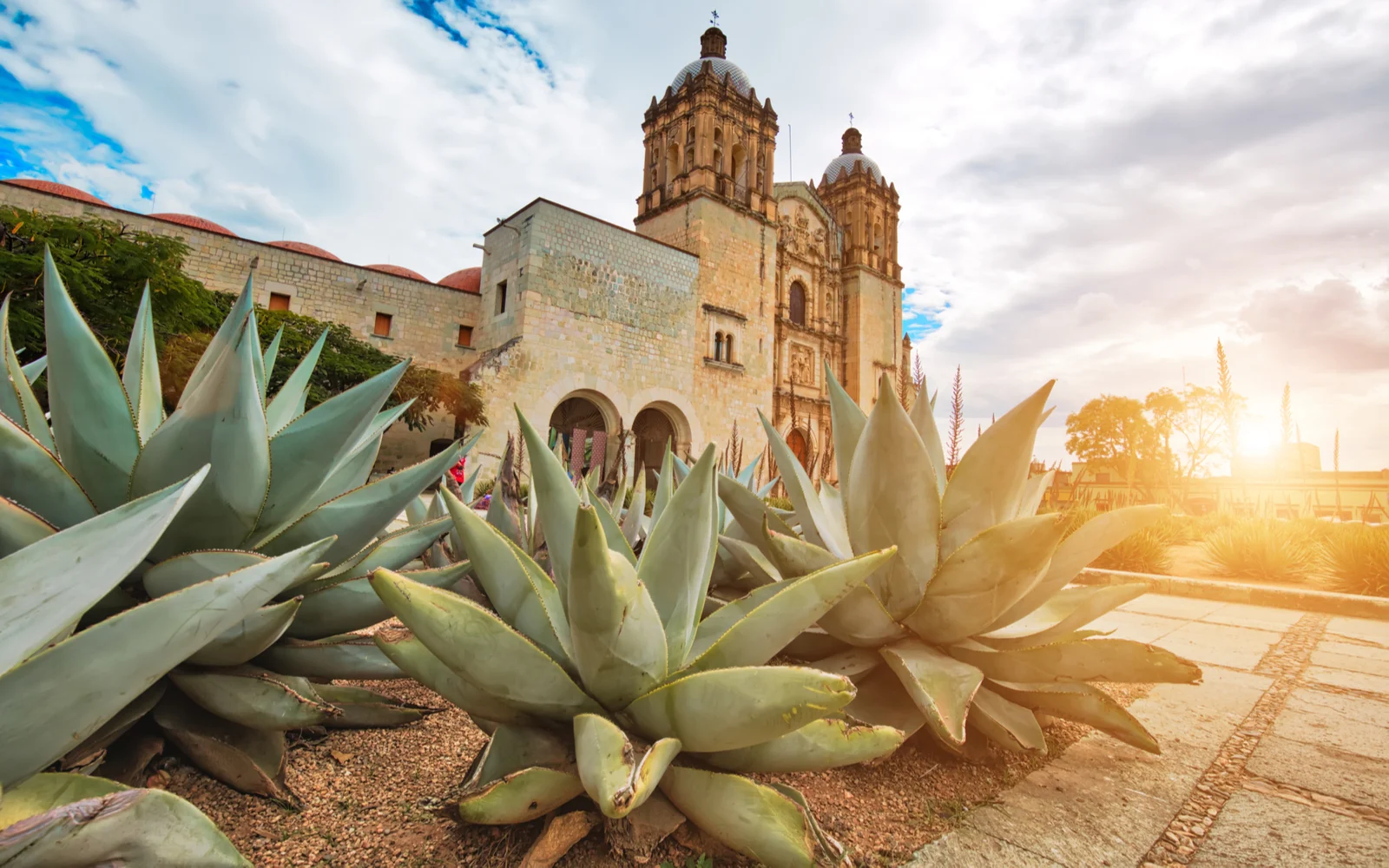Oaxaca is a southern state in Mexico, and the city of Oaxaca is that state’s capital. It’s known for authentic Mexican charm, incredible food, and safety. Oaxaca remains one of the safest places to visit, with over 1 million visitors annually.
Moreover, Oaxaca is known for its welcoming community, with parties and events constantly being held in the city. Visitors will find a rich culture filled with welcoming individuals and some of the best Mexican food they’ll ever taste.
Oaxaca is known as the Land of Seven Moles (If you do not know what mole is, it is a delicious Mexican sauce, and you should try some), and it’s a foodie’s dream come true.
While Oaxaca has plenty of high-end restaurants, you don’t have to drop so much for delicious food. Ask a local about their favorite hang-out or food truck, then enjoy.
Oaxaca is known for its nightlife and mezcal (an alcoholic drink made of agave, 45 to 50% alcohol, so drink responsibly), with several famous bars and clubs dotting the region.
You can also visit the more rural areas to see artisan workshops for unique items like alebrijes and other crafts.
Or explore the nature and wildlife of one of the most diverse regions of Mexico. There’s a lot to see and do here, but thankfully, Oaxaca remains one of the most peaceful regions of Mexico, with primarily petty and minor crimes.
Read Next: Is Mexico Safe to Visit in 2024?
Is Oaxaca Safe to Visit in 2024?
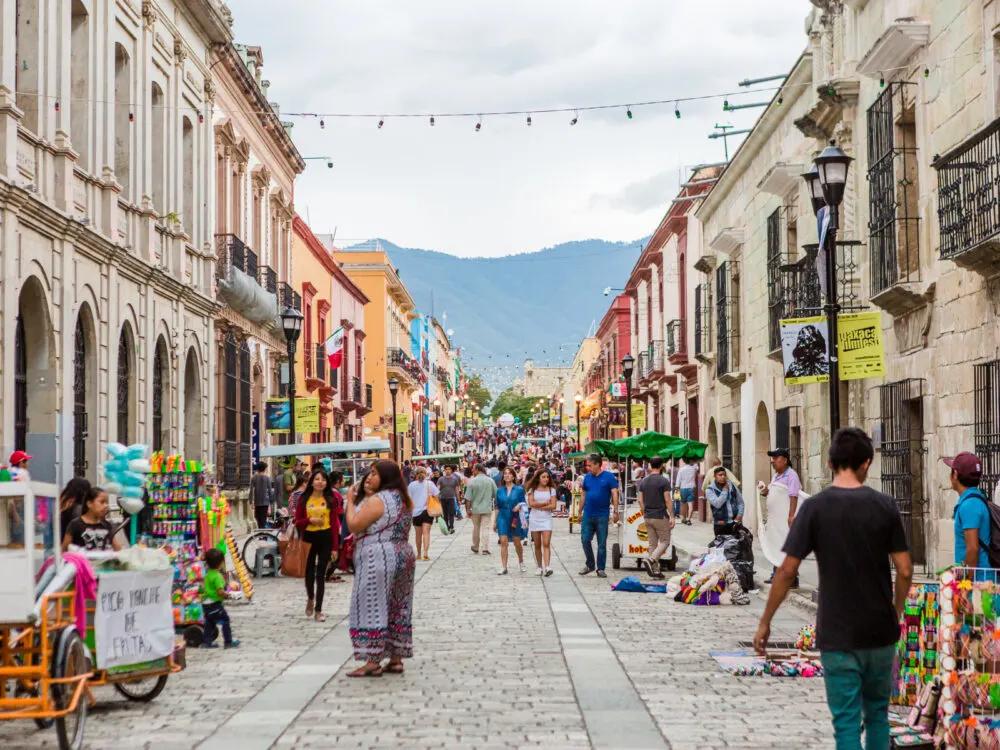
Kelli Hayden/Shutterstock
Oaxaca ranks similar to the Riveria Maya region in terms of safety, meaning it’s pretty safe, especially for tourists. The current US warning level at the time of this writing is Other because the country and crime vary wildly.
Chihuahua is very different from Yucatan, and Oaxaca is no exception. The current warning for Oaxaca as a state is 2; exercise increased caution.
And this isn’t so much due to serious crime as it’s due to a rise in pickpocketing and thievery, particularly along the coast at night. Ultimately, Oaxaca is much safer to travel to than other parts of Mexico, but you should still use common sense to avoid trouble.
Crime in Oaxaca
Crime in Oaxaca is mainly limited to pickpocketing and petty theft. Most tourists don’t experience any serious crime. However, you should still take care of your belongings and never leave them unattended.
Drug violence is rare, and the region has been spared cartel violence in other parts of Mexico. However, you should still avoid drugs at all costs and stay away from people associated with them.
Oaxaca has much less crime than other regions, primarily thanks to its lower cost of living. However, you should still be cautious while in the region to avoid any problems.
Driving: Dicey But Doable
If you have ample experience driving in other countries and can handle aggressive drivers, then, by all means, take the opportunity to explore the city and the region by car. If not, you’re better off hailing a cab or taking a bus.
The roads are in poor condition with large potholes and constant speed bumps, and they only worsen in rural areas. Moreover, Oaxaca is a historic city from the colonial period, so roads in and around the landmark distinct are very confusing.
It’s better to catch a ride from a driver who knows where to go. Another concern when driving around Oaxaca city is the frequent protests. Worker and union protests usually block the streets of the town.
While these protests rarely turn violent, you could be stuck for hours before it disperses. Parties also block the roads, so you should try to hail a taxi or go on foot.
Getting Around: Taxis, Buses, and Rentals
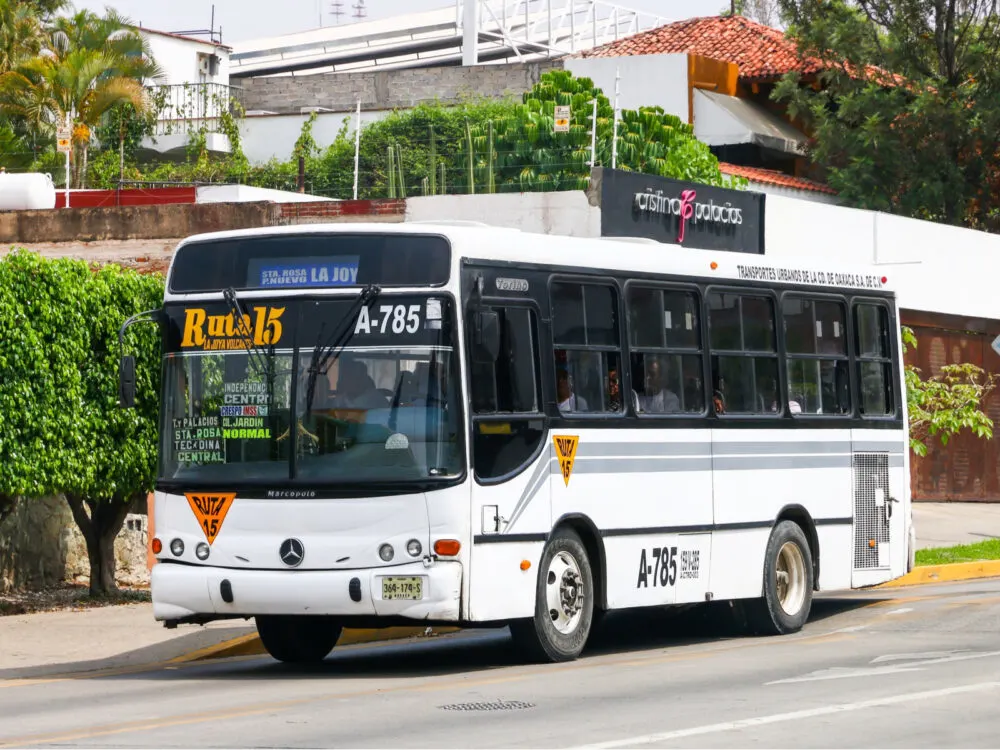
Art Konovalov/Shutterstock
If you decide to find alternative modes of transportation, you have plenty to choose from. Public transportation is safe, for both buses and taxis, so you can ride whichever one you’re most comfortable with or whoever fits your budget.
When you’re hailing a taxi, remember that the drivers have different fares and no meters, so there’s no set amount you’ll have to pay.
You can also negotiate the amount if you feel it should be cheaper, but keep in mind it’s how they make a living. Most taxis are safe, but if you think something is wrong, get the driver’s name and license plate number.
Also, fares jump about 25% from 10 pm to 5 am, as most people going home from bars need the rides. Walking around at night in an unfamiliar location is generally a bad idea, so it’s worth the extra money.
Buses are similar, except the first-class bus has a set fare. A first-class bus like Ado shouldn’t have any problems getting you where you’re going, along with the first-class buses in the city. If you want to save money by taking a second-class bus, do your research.
There are a lot of companies that don’t have their customer’s best interests at heart. A bus is a good idea if you’re trying to reach the coast or explore the region more.
You can also take a bus (preferably a well-established and respectable company like Ado) from Mexico City, but the ride is around seven hours.
Buy your tickets ahead of time, online, as any company with a website would be better than the shady companies that hawk tickets at the second-class stations. Do your research, and you could find a fantastic deal.
If you choose to rent a car, ensure the company has written down any previous damage on the vehicle and spring for the insurance. The roads can get wild, and you don’t want to pay for damage someone else caused.
Most major credit card companies include rental collision insurance when you use their cards to rent vehicles. However, no matter how much insurance you have, drive with caution. Use good judgment, and never drink and drive.
Avoiding Bad Neighborhoods
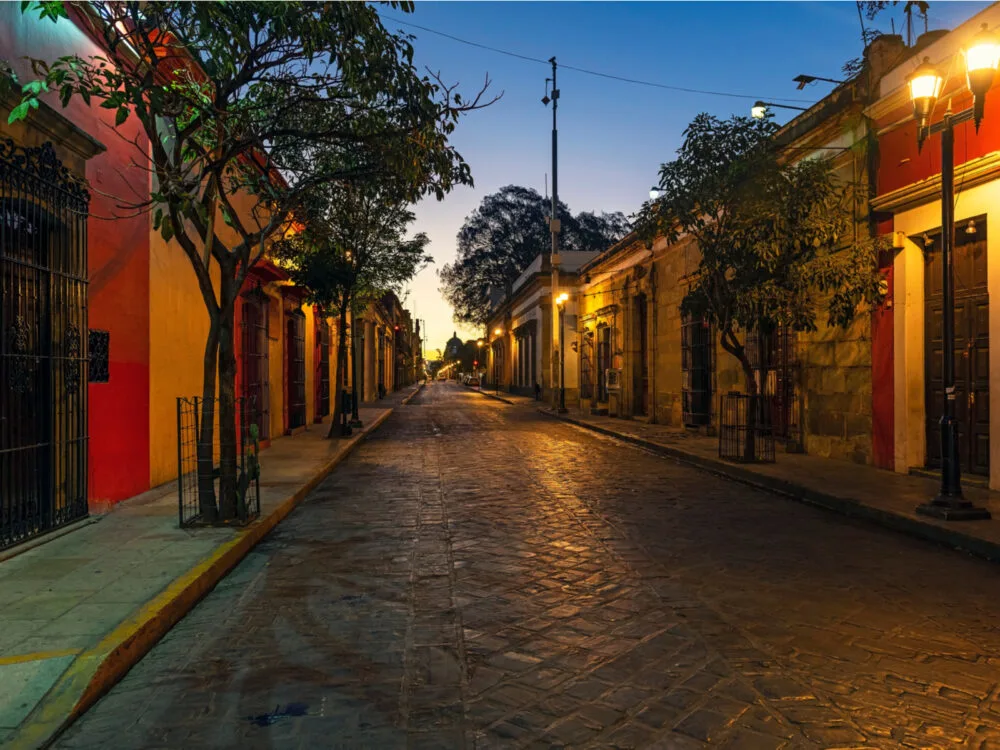
Sl-Photography/Shutterstock
Most crimes can be avoided by not looking like a rich tourist, wearing a money belt, and using common sense. But you should avoid some areas in Oaxaca, particularly at night.
Crimes in coastal areas like Puerto Escondida, for example, are on the rise, but most of it occurs on the unlit beach at night, so avoid midnight beach trips if you can. You should also travel with a tour through rural areas, as the region’s poverty could drive some to desperate measures.
However, the low cost of living typically prevents that. All in all, most areas of Oaxaca are safe. However, you should still take safety precautions and stay in well-lit tourist areas after dark.
Riptides, Earthquakes, and Hurricanes: Environmental Dangers in Oaxaca
As with anywhere on Earth, some environmental dangers are associated with Oaxaca and its geographical location. Its proximity to the ocean and fault lines means there are certain natural disasters you should be aware of while visiting.
However, as long as you remain calm and understand how to react in an emergency, you should have no problems during your visit.
Strong Currents
The Pacific lies along the coast of Oaxaca, and the undercurrents may not be friendly to all swimmers. Watch for warning flags along the beach, and look for beaches with lifeguards on patrol if you have children.
Ask a local if you’re unsure if a beach is safe for swimming. Most locals will be happy to tell you if a beach is safe or not. The Pacific Ocean can also generate tropical storms and hurricanes, especially during hurricane season, June through November.
Look Out for Storms
Pay attention to local weather reports and know when and where to take shelter from storms. If you’ve never experienced such weather before, read up on safety and shelter tips if you’re going to visit during these months.
Prepare for Earthquakes
Pay attention to local weather reports and know when and where to take shelter from storms. Oaxaca is close to a fault line capable of causing severe earthquakes, the largest in recent years being an 8.2 magnitude earthquake.
While such a large quake is infrequent (it was the largest quake in a hundred years), it’s still prudent to understand emergency procedures in case another happens while on your trip.
Get away from buildings and out from under structures, so you don’t get struck by falling debris or in a crumbling building. If you’re near the coast, head inland and to higher elevations to seek shelter in case of a tsunami.
Several minor earthquakes happen, particularly during the summer, but they are usually off the coast and too small to cause many problems. Overall, earthquakes are not something you should be worried about when visiting, but it’s still good to understand what you need to do in an emergency.
Save Your Embassy’s Number
If, against all odds, you find yourself stranded in Oaxaca due to a hurricane or earthquake and are having trouble getting back home, contact your local embassy for extraction.
The embassy can also help your case of other emergencies, like health emergencies, the loss of essential documents, and diplomatic breakdowns between countries.
Remember you should only contact them if it’s an emergency and you cannot return home on your own. Oaxaca usually is relatively safe for everyone, visitors and residents alike. However, if you take the necessary precautions, you should have no trouble during your stay.
A hurricane or earthquake large enough to damage the region is quite rare, so you can have a pleasant stay as long as you obey the riptide warnings.
Things to Consider
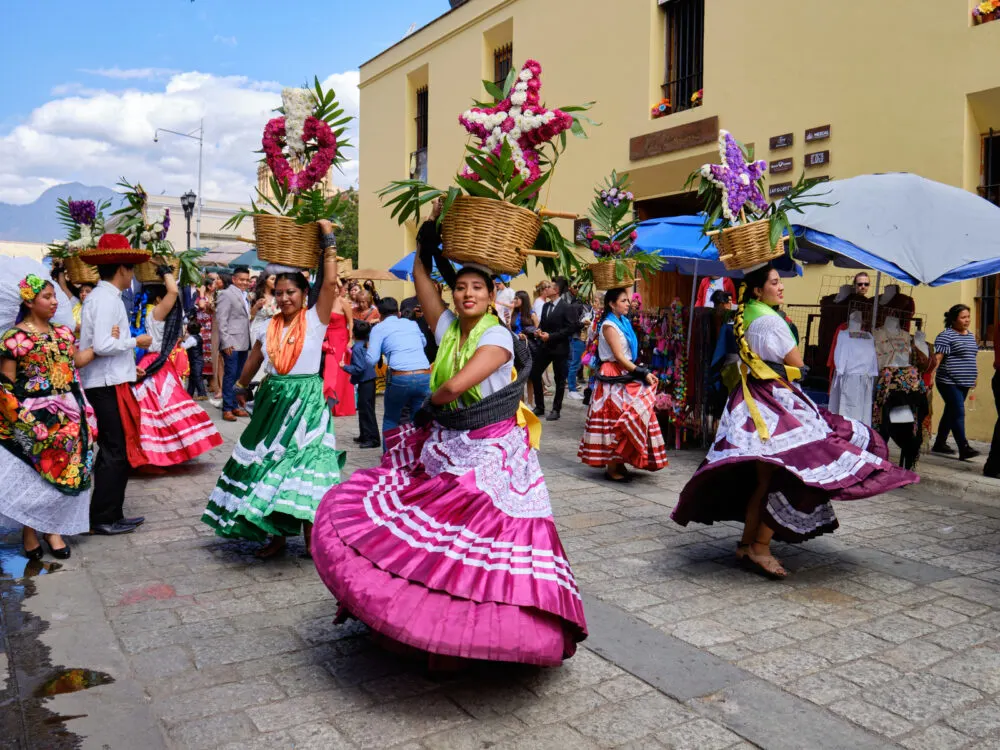
Wirestock Creators/Shutterstock
No matter where you visit in the world, whether a small European nation or a powerhouse like the United States, you should practice reasonable safety measures, like not walking alone at night and keeping a close eye on your belongings.
Crime exists everywhere, and you should practice good safety and common sense no matter where you choose to travel.
Avoid Looking Like a Target
Keep money, gadgets, and jewelry out of sight while traveling. Wear casual clothes, and keep your valuables hidden. One of the worst things you can do is make yourself look like a loaded target.
Protect Important Documents
Protect your essential documents and make copies. If your documents like your passport or identification papers are stolen, you may end up not being able to get back to your home country. Keep copies in a separate safe place, and contact your local embassy to get back safely.
Be Cautious
Exercise increased caution at night. If you go out, stay in organized groups in well-lit touristy areas. Use vehicles like taxis to get around, and don’t walk through unfamiliar streets. This goes double for women travelers.
Learn the Language
Since English isn’t commonly spoken in Oaxaca, learning the local language is appreciated by locals no matter where you go. Learn key phrases and how to ask for help in your target language in case of emergencies.
Trust Your Instincts
Your instincts exist to tell you when you’re in a potentially dangerous situation. If you don’t trust your tour guide or bus driver, walking away is okay. Book with another tour company, and wait for another bus.
Travel in a Group
If you’re nervous, travel in a group. You can find plenty of like-minded people on travel forums or book with a travel company that sorts you into travel groups. While alone is doable, traveling in a group is often cheaper, safer, and more fun.
Drink Safely
Drink responsibly. You should practice good drink safety when you’re out enjoying the nightlife and never get so intoxicated that you can’t get home alone. It might be best to drink with others who can help you in case of an accident. Again, this goes double for ladies.
Research
Research tour companies, hotels, hostels, or other vital facets of your travel. Second and third-rate companies might be cheaper, but they may not have your best interests at heart.
Frequently Asked Questions
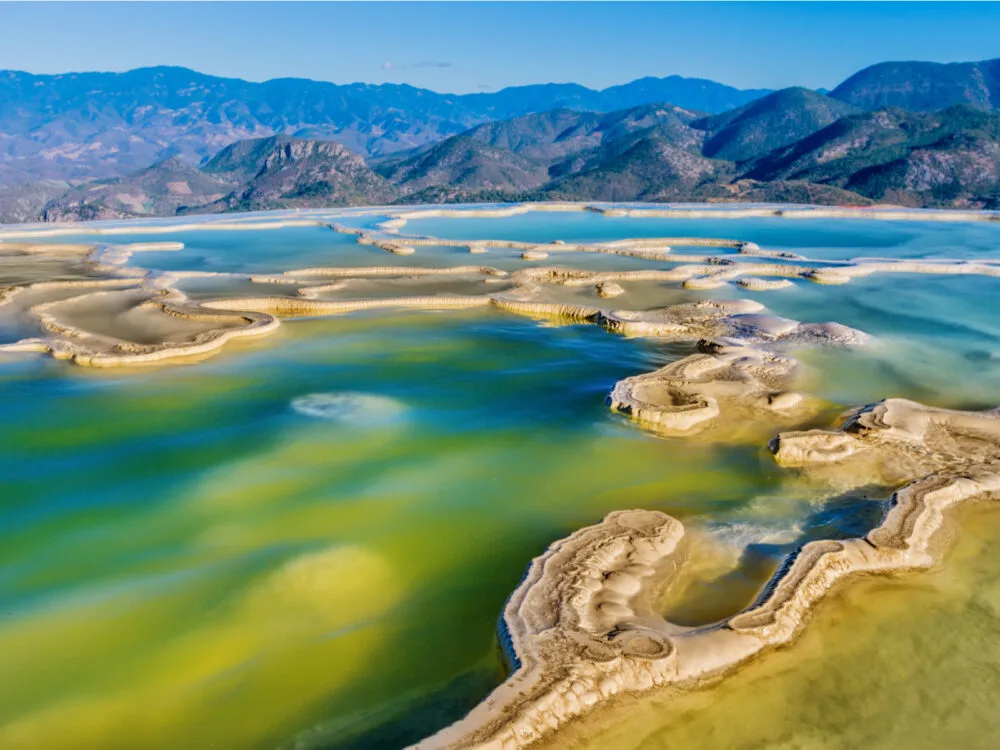
Belikova Oksana/Shutterstock
Oaxaca is relatively safe for anyone who wants to visit, but you should still be cautious.
Is Oaxaca safe to walk at night?
No, it’s better to get a taxi. While the rates might be higher, you don’t want to walk through unfamiliar streets in the dark while drunk. While crime isn’t exceptionally high at night, you still want to return to your lodgings without incident.
Is Oaxaca safe for female travelers?
Yes, it’s one of the safest parts of Mexico for female travelers to visit. You should have a wonderful stay if you practice good safety.
Do they speak English in Oaxaca?
They don’t really speak English here. Places catering to tourists may speak some English, but the primary language is Spanish. It’s best to learn some key phrases and brush up on the basics to get by.
Can you drink the water in Oaxaca?
No. The water is known to cause upset stomachs. You can use a filter water bottle to reduce bottled water’s cost and environmental impact. Restaurants serve bottled water and ice made with bottled water; you should wash and peel fruit yourself.
Is there Uber in Oaxaca?
No, there is no Uber in Oaxaca – only taxis. Uber is against local laws, so it’s best to use apps focusing on taxi services as a workaround.
Book Your Trip to Oaxaca Today!
Oaxaca is one of the safest states you can visit in Mexico. The people are friendly, violence and crime are low, and it’s a place full of culture, food, and Mexican heritage. As long as you practice good safety, you’ll find Oaxaca one of Mexico’s most underrated destinations.



